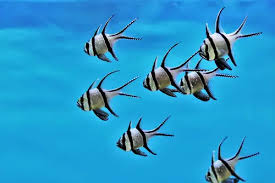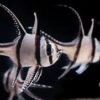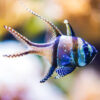Depictions of Dragons in Modern Chinese Literature and Contemporary Art
The dragon (龙, Lóng) has long been one of the most revered and enduring symbols in Chinese culture. Traditionally associated with power, wisdom, prosperity, and divine protection, dragons have played a crucial role in ancient mythology, imperial iconography, and religious beliefs. However, as Chinese society evolved, so too did the representation of dragons in modern literature and contemporary art.
In contemporary works, dragons have taken on new meanings, reflecting shifting cultural perspectives, national identity, and artistic innovation. From novels and poetry to paintings and digital media, modern depictions of dragons continue to bridge the past and present, embodying themes of tradition, modernity, and transformation.
This article explores how dragons are portrayed in modern Chinese literature and contemporary art, highlighting their symbolic evolution, artistic reinterpretations, and cultural significance in the 21st century.
1. The Evolution of Dragons in Modern Chinese Literature
Dragons as Symbols of National Identity in Contemporary Novels
In modern Chinese literature, dragons frequently appear as symbols of national pride, resilience, and cultural heritage. With China’s rapid modernization and increasing global influence, authors have incorporated dragons as metaphors for the country’s transformation.
For example, in contemporary Chinese fiction:
- Mo Yan, a Nobel Prize-winning author, often weaves mythical elements into his narratives. In some of his works, dragons represent the spirit of the Chinese people, embodying their struggles and triumphs.
- Liu Cixin’s sci-fi masterpiece, The Three-Body Problem, does not directly feature dragons, but its themes of Chinese intellectual power and cosmic destiny resonate with the dragon’s traditional role as a guardian of wisdom.
- In historical fiction, writers like Jin Yong (Louis Cha) have used dragon imagery to represent martial arts heroes, drawing on the legendary prowess of dragons to symbolize their skills and moral strength.
Dragons in Modern Poetry: Guardians of Nature and Tradition
In contemporary poetry, dragons have become symbols of environmental awareness, nostalgia, and cultural preservation. Many modern Chinese poets use dragon imagery to express concerns about:
- Environmental degradation, portraying dragons as guardians of rivers and forests threatened by industrialization.
- The fading of ancient traditions, with dragons depicted as lonely or forgotten beings in a rapidly changing world.
- The resilience of Chinese culture, where dragons symbolize the enduring spirit of the nation’s history and values.
A common theme in poetry is the silent cry of the dragon, representing a longing for balance between modern development and traditional wisdom.
2. Dragons in Contemporary Chinese Art: Innovation and Reinterpretation
Dragons in Modern Painting and Calligraphy
In traditional Chinese art, dragons were often painted in imperial gold and red, swirling among clouds or emerging from water. In contemporary art, however, artists have reinterpreted dragons in bold and experimental ways.
- Xu Bing, a contemporary Chinese artist, has created calligraphic works where the shape of dragons is formed using modern Chinese characters, blending tradition with linguistic innovation.
- Ai Weiwei, known for his provocative art, has used dragon imagery in installations to question political authority and cultural identity. His “Dragon in Chains” sculpture symbolizes freedom and constraint in modern China.
- Cai Guo-Qiang, an artist famous for his fireworks and gunpowder paintings, often incorporates dragons in explosive displays, showcasing their power and movement in ways never seen in classical art.
These modern interpretations reflect a dynamic conversation between heritage and contemporary expression, ensuring that dragons remain relevant in today’s artistic landscape.
Dragons in Digital and New Media Art
With the rise of digital art and virtual reality, dragons have found a new medium for expression. Chinese artists have used 3D animation, interactive installations, and AI-generated imagery to bring dragons into the modern era.
- In video games, dragons are often reimagined as mechanized creatures, blending ancient mythology with futuristic aesthetics.
- In VR exhibitions, visitors can interact with holographic dragons, experiencing their legendary power in an immersive environment.
- In NFT (Non-Fungible Token) art, dragons have become valuable digital assets, showcasing Chinese mythology in the world of blockchain technology.
These innovations demonstrate how dragons continue to evolve, adapting to new artistic mediums while preserving their deep-rooted cultural significance.
3. The Symbolism of Dragons in Modern Chinese Cinema and Television
Dragons as Representations of Strength and Destiny
In modern Chinese cinema, dragons frequently appear as symbols of destiny, protection, and supernatural power. They are often central to fantasy films, martial arts epics, and historical dramas.
- In Crouching Tiger, Hidden Dragon (2000), the dragon symbolizes the hidden strength and fate of warriors, reflecting the themes of inner power and spiritual transcendence.
- In The Monkey King series, dragons appear as celestial beings, maintaining their traditional role as divine protectors while interacting with the journey of Sun Wukong.
- In modern sci-fi and fantasy films, dragons have been redesigned with cybernetic features, blending mythology with futuristic storytelling.
Dragons in Animation and Popular Media
Modern Chinese animation (Donghua, 动画) has also redefined dragon mythology, presenting them in ways that appeal to younger audiences.
- In films like Big Fish & Begonia (2016), dragons represent the connection between the human and spirit worlds, showcasing their mystical and emotional depth.
- In the animated film Ne Zha (2019), dragons are depicted as both opponents and allies, highlighting their duality as powerful forces that can be either destructive or protective.
- In online comics and web novels, dragons are often given modern personalities, appearing as wise mentors, fierce warriors, or even rebellious anti-heroes.
This reinvention ensures that dragons remain an integral part of Chinese popular culture, appealing to both traditionalists and modern audiences.
4. Dragons in Contemporary Fashion and Design
Dragons in High Fashion and Streetwear
The influence of dragons has extended into the world of fashion and design, where they are seen as symbols of prestige, rebellion, and cultural pride.
- Luxury brands in China have incorporated dragon motifs into couture fashion, blending Eastern mythology with contemporary elegance.
- Streetwear brands have used dragon imagery to represent urban strength and identity, often featuring stylized dragon graphics in bold, modern designs.
- Tattoo culture has embraced minimalist dragon designs, signifying personal power, wisdom, and resilience.
Dragons in Architectural Design
In modern architecture, dragon motifs continue to inspire:
- Futuristic skyscrapers designed with serpentine dragon shapes symbolize prosperity and national strength.
- Traditional pagodas with modern dragon carvings blend heritage with contemporary aesthetics.
- Digital billboards and neon dragons in urban centers reflect the merging of old and new visual storytelling.
This transformation in fashion and architecture demonstrates how dragons remain a powerful emblem of both tradition and innovation.
Conclusion: The Dragon’s Enduring Legacy in Contemporary Chinese Culture
From modern literature and digital art to cinema and fashion, the dragon has evolved into a multifaceted symbol in contemporary Chinese culture. While maintaining its traditional roots as a protector, ruler, and divine being, the dragon now represents national pride, artistic innovation, and cultural transformation.
As China continues to blend tradition with modernity, the dragon remains at the heart of this evolution—an eternal guardian of heritage, creativity, and the future. Whether in ink and brush or pixels and neon lights, the dragon’s spirit continues to soar across the ever-changing artistic landscape of China.


